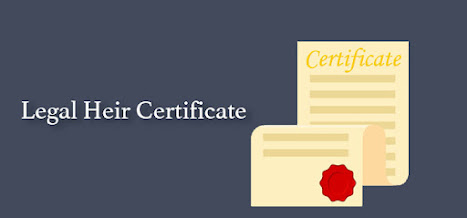Triumphant Legacy: Maximizing Assets through India's Succession Certificate
The process of transferring assets and properties after the demise of an individual can often be complex and challenging. In India, one legal document that simplifies this procedure is the Succession Certificate. This article aims to provide a comprehensive understanding of what a succession certificate entails, the process of obtaining it, its significance, limitations, and more.
1. Introduction
When an individual passes away, their legal heirs often face difficulties in managing and transferring the deceased person's assets and properties. The succession certificate serves as a legal document that grants authority to the heirs to handle such matters smoothly. Understanding the intricacies of this document is essential to ensure a hassle-free transfer of assets and property rights.
2. What is a Succession Certificate?
2.1. Legal Definition and Purpose
A succession certificate, as per the Indian Succession Act, 1925, is a court-issued document that grants the legal right to the heirs of a deceased person to collect debts, transfer assets, and settle other liabilities. It establishes the authenticity of the heirs and authorizes them to act on behalf of the deceased individual.
2.2. When is a Succession Certificate Required?
A succession certificate becomes necessary when the deceased individual has left behind debts, shares, bank accounts, or other movable assets. It allows the heirs to claim and transfer these assets to their names legally. Without a succession certificate, banks, companies, and other entities may refuse to release the deceased person's funds or transfer assets.
3. Process of Obtaining a Succession Certificate
Obtaining a succession certificate involves a systematic legal procedure. The following steps outline the process:
3.1. Eligibility Criteria
The legal heirs of the deceased person, as defined by the Indian Succession Act, are eligible to apply for a succession certificate. These heirs may include the spouse, children, parents, or any other individuals mentioned in the will or as per the laws of inheritance.
3.2. Documentation Required
To initiate the application process, the heirs need to gather specific documents, including the death certificate of the deceased, proof of residence, proof of relationship with the deceased, and details of assets and liabilities. These documents are crucial in establishing the validity of the application.
3.3. Filing the Application
The next step involves filing the application for a succession certificate with the appropriate civil court. The court fees, along with the necessary documents, must be submitted at this stage. It is advisable to seek legal assistance to ensure accuracy and adherence to the procedural requirements.
3.4. Verification and Court Proceedings
Once the application is filed, the court examines the documentation and verifies the claims made by the heirs. The court may also notify interested parties, giving them an opportunity to contest the application. After due proceedings and satisfaction of the court, the succession certificate is issued.
4. Role of the Court in Issuing a Succession Certificate
4.1. Jurisdiction and Competent Authority
The jurisdiction for applying for a succession certificate lies with the civil court under which the deceased individual's assets fall. The court, after proper evaluation, determines the rightful heirs and their entitlement to the deceased person's assets.
4.2. Role of Legal Heirs and Interested Parties
Legal heirs play a vital role in the process of obtaining a succession certificate. They need to provide evidence supporting their claims and participate in court proceedings. Interested parties, such as creditors or individuals with conflicting claims, also have the right to present their case before the court.
5. Benefits and Importance of a Succession Certificate
5.1. Transfer of Assets and Property
The primary advantage of a succession certificate is that it facilitates the transfer of movable assets, such as bank accounts, debts, and other investments, from the deceased person's name to the legal heirs. This enables a smooth transition of ownership and prevents legal disputes.
5.2. Settling Debts and Liabilities
With a succession certificate, heirs can legally settle the outstanding debts and liabilities left behind by the deceased individual. This document provides a clear framework for addressing financial obligations and protects the heirs from unnecessary financial burdens.
5.3. Legal Protection and Avoidance of Disputes
Possessing a succession certificate provides legal protection to the heirs and helps in avoiding potential disputes among family members or other claimants. It acts as evidence of the rightful entitlement of the heirs, minimizing the chances of conflicts and ensuring a fair distribution of assets.
6. Limitations and Exceptions of a Succession Certificate
6.1. Exclusion of Immovable Properties
It's important to note that a succession certificate only covers movable assets, such as bank accounts, investments, and debts. It does not apply to immovable properties, including land, houses, or real estate. For the transfer of immovable properties, other legal procedures, such as probate or a registered will, may be required.
6.2. Alternative Procedures
In certain situations, alternative procedures like probate or letters of administration may be more appropriate or legally mandated. These procedures are specifically applicable when a will exists, the deceased person had no legal heirs, or when immovable properties are involved. It is advisable to consult a legal expert to determine the most suitable course of action.
7. Conclusion
A succession certificate plays a crucial role in simplifying the transfer of assets and settling financial matters after the demise of an individual. It provides legal validity to the heirs, enabling them to handle the deceased person's movable assets effectively. While limitations exist, the benefits of obtaining a succession certificate outweigh the associated complexities, providing a secure and lawful process for asset



Comments
Post a Comment